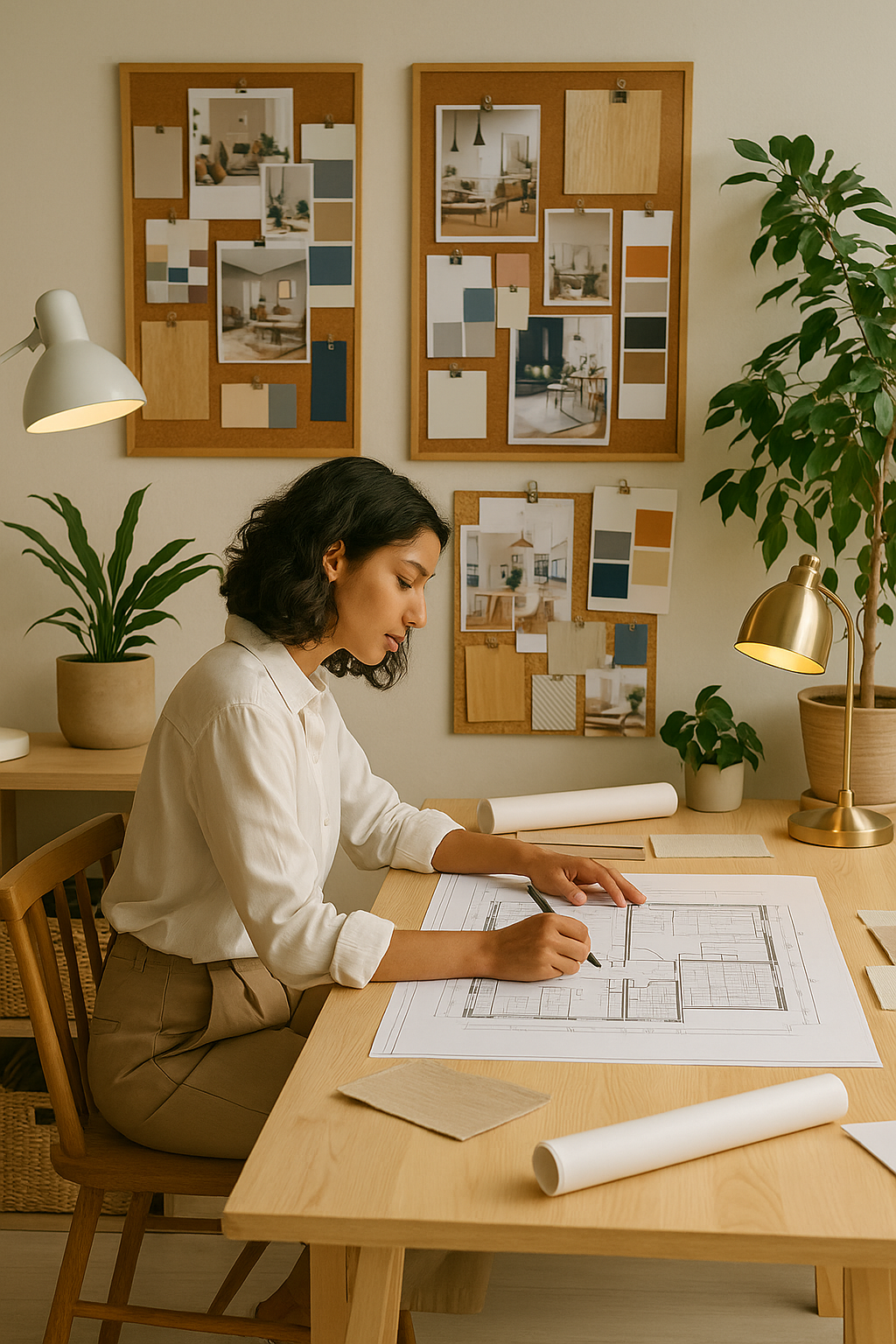Starting a design scheme can be daunting. What will the client expect? What styles do they prefer? Here are few points to consider to help keep you on track.
Client
The end user is the most important element to consider. Be thorough in your research and compile a questionnaire in order to keep the project on track.
Find out what the client likes and their style preferences. It is important to assess how the space is currently being used and by how many people. It is also important to find out whether there will be any structural changes before you set out.
Budget
From your questionnaire you should be able to determine the budget for the design. Consider the high cost items first:
- Flooring
- Furniture
- Window treatments
Will any of these items will be altered or subject to change? Once the budget is established this will determine what your search parameters will be for fixtures, fittings and equipment.
Flooring
Start from the ground up. Flooring is one of the largest surface areas in any room and the choice of material will determine what colours and décor you will be able to use later on.
Window treatments
As with flooring, this should be treated as a permanent addition. Consider aspects such as colour and pattern. Select a finish that will last rather than something that is on trend, as this will help to ensure that your scheme will endure and be versatile when you decide to update in the future.
Furniture
Consider the style of furniture and choose styles that can be effective as part of a scheme or will work with other style periods. Don’t be afraid to mix styles and finishes and choose pieces that are considered and functional for storage.
Styles or themes
Look at the overall style of the space, are there any features within the room that can be celebrated or enhanced? For example, if you are designing a period property cornicing, dado rails, skirting and architrave can be blended in or highlighted depending on the client preference.
Lighting
One of the most fundamental aspects in terms of interior design, the amount of natural light in a space will heavily influence your choice of colour and dictate what feeling the room will ultimately have in terms of atmosphere. Consider the orientation of the space and when choosing paint colours, test beforehand to determine their suitability. When sourcing artificial lighting be sure to purchase from reputable suppliers and see what they are like in showrooms where possible. While purchasing online can be cheaper, it can be a risk as the appearance in reality may not live up to the image you have seen on a website.
Avoid trends
Don’t rush into a trend or look without considering the overall space and client preferences first, design schemes are likely to date quickly. Finding out what the client does not like can be just as informative as what they do prefer.
Be versatile
Don’t be too rigid when choosing a style, not everything needs to match and not everything needs to be from a single category.
Avoid hiding behind a brand
Don’t subscribe to price being an indication of quality; this is not always the case. Do your research and specify what you feel is suitable and the best option for the client rather than assuming quality from a big name brand.
Take time to decide
Try not to choose something on instinct straight away. Make a considered choice and remember this scheme is for your client. Try to avoid choosing elements that you like for yourself because design is subjective and people’s tastes can differ hugely.

